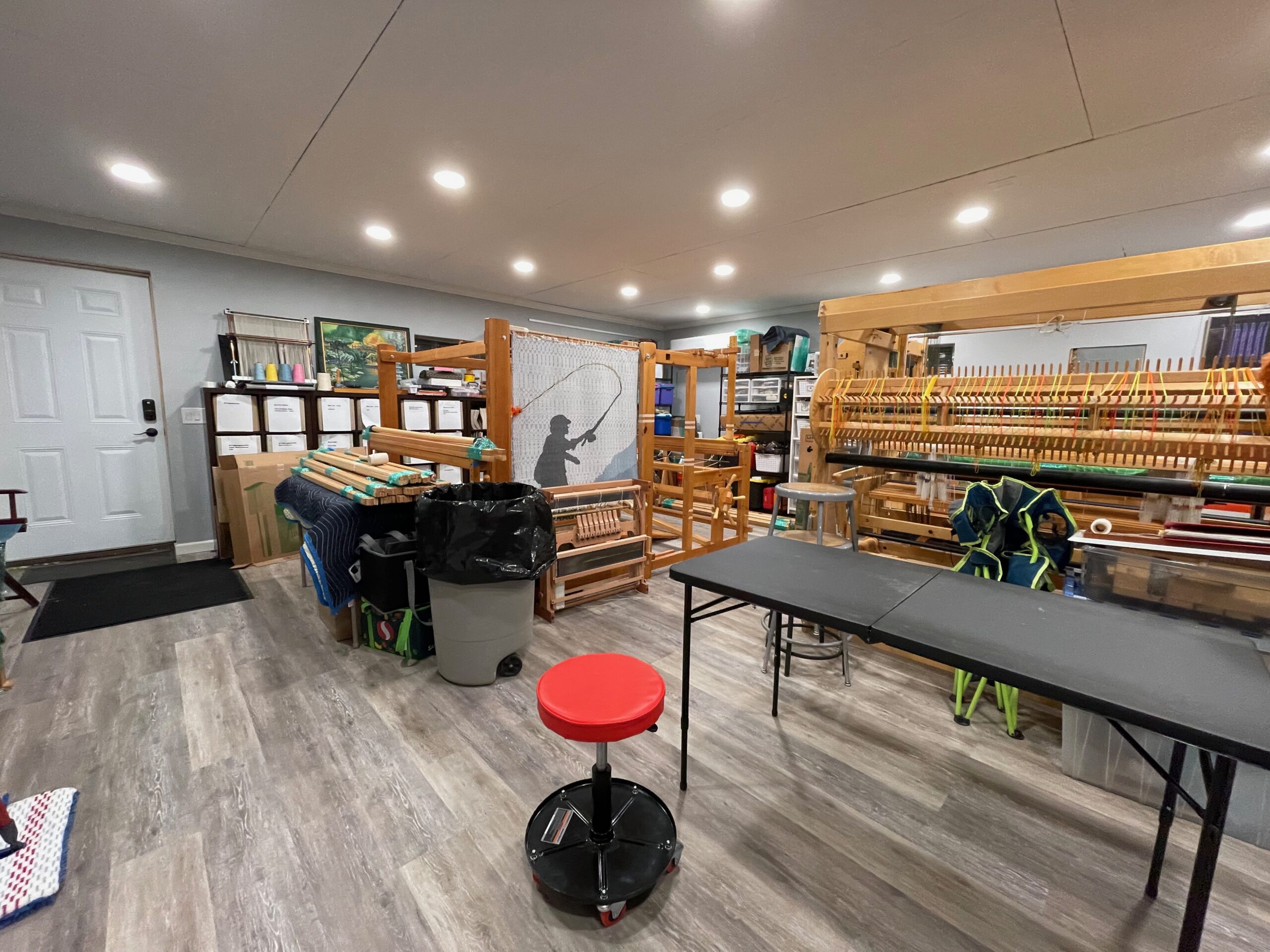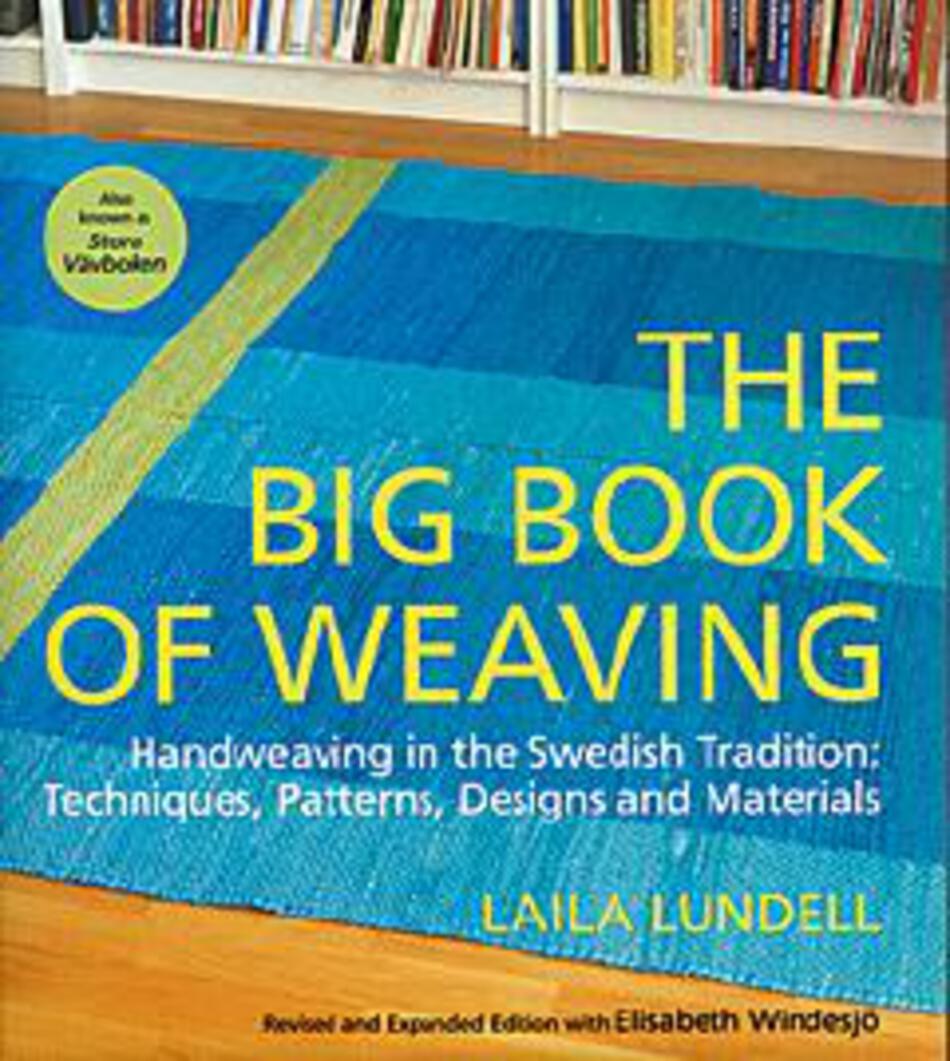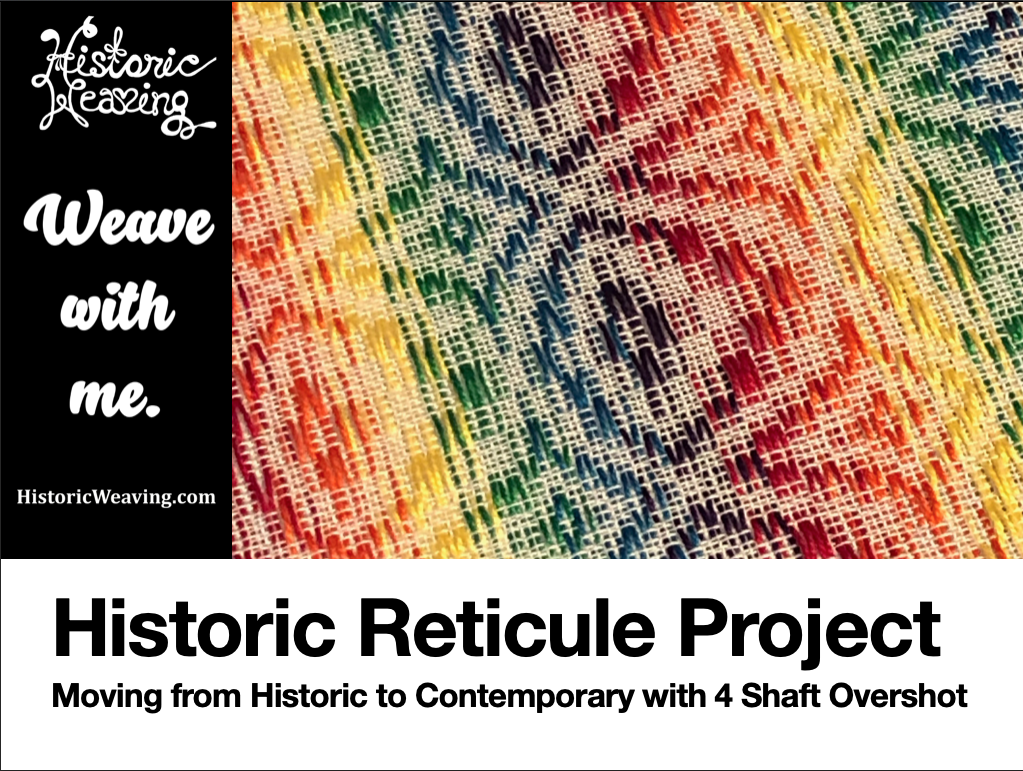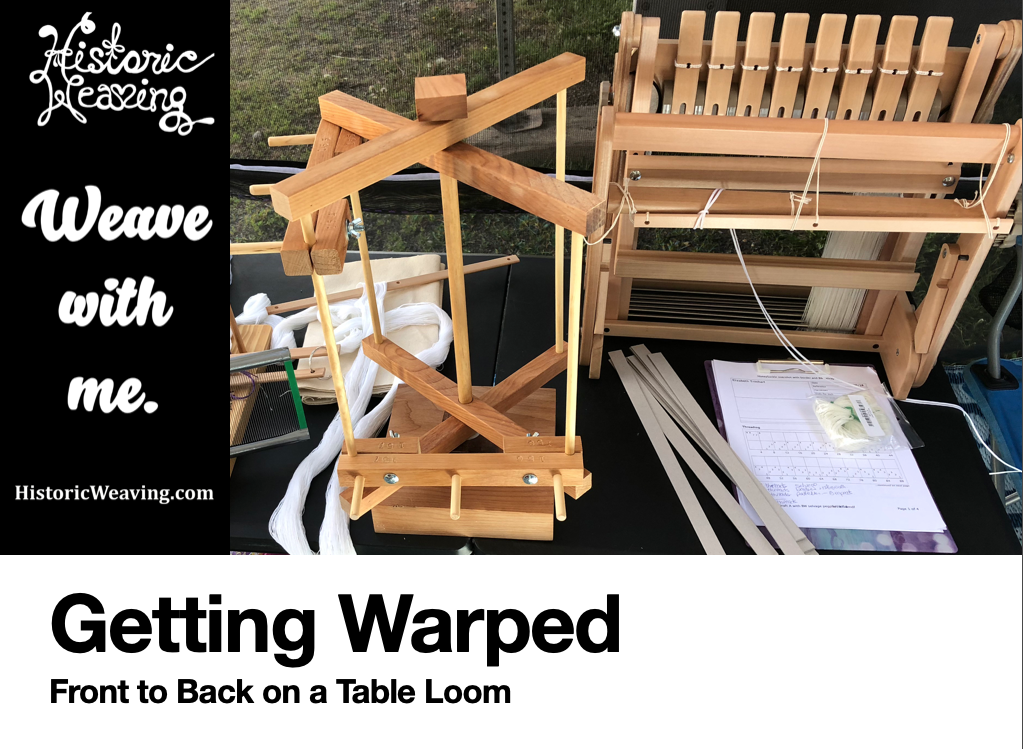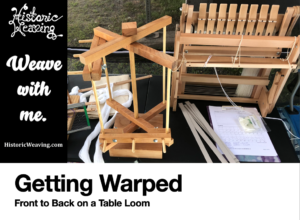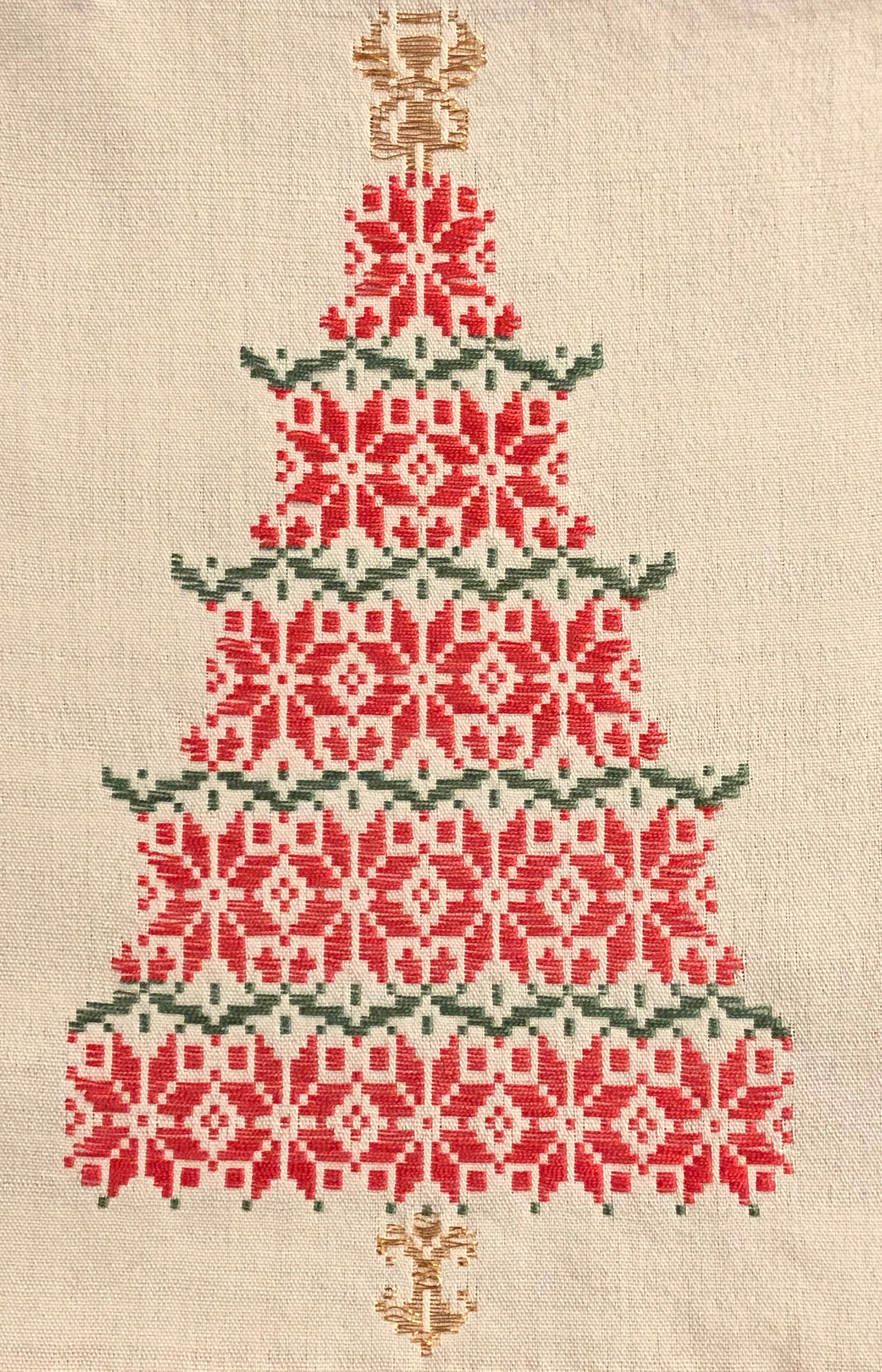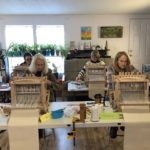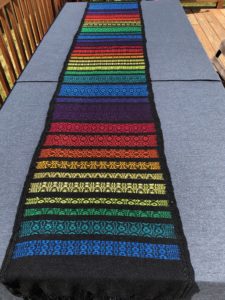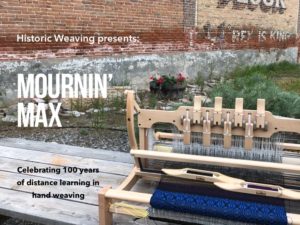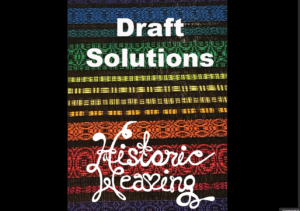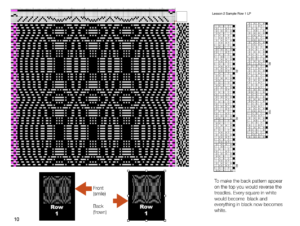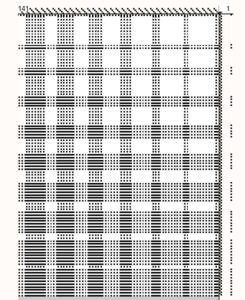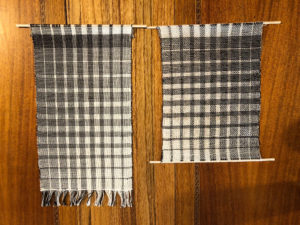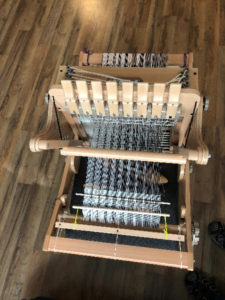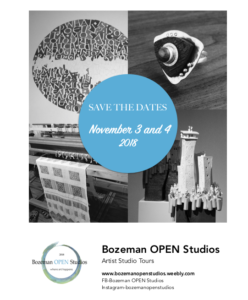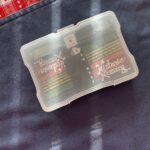 The Weavers Overshot Challenge can be completed by an individual weaver or group of weavers as part of a guild one day or weekend workshop. The goal is to have a sampler that flows from color to color and row to row of pattern (at least different 8 designs) using overshot weaving techniques. The workshop is designed for 4 and 8 shaft table and floor looms. The Draft Solutions book contains both Lift Plans and Treadling drafts. No computer software required.
The Weavers Overshot Challenge can be completed by an individual weaver or group of weavers as part of a guild one day or weekend workshop. The goal is to have a sampler that flows from color to color and row to row of pattern (at least different 8 designs) using overshot weaving techniques. The workshop is designed for 4 and 8 shaft table and floor looms. The Draft Solutions book contains both Lift Plans and Treadling drafts. No computer software required.
Time Requirement:
This challenge is intended to take 4-6 hours to draft and weave on a 4 or 8 shaft floor or table loom that has been pre-warped according to instructions.
When completing the challenge using your personal loom there is a minimum weaving skill required: The Ability to Warp a Loom.
Setting up the warp should be completed prior to starting this challenge. This process will require a weaver to determine their skill level for play and prepare a warp accordingly. It is suggested that brand new weavers should start with a loom already prepared for them.
YouTube Video showing some of the samples produced in the Weavers Overshot Challenge: https://www.youtube.com/watch?v=lPBqh4_jb2Y
The Weavers Overshot Challenge has three components two of which can be ordered from Historic Weaving, and the third – the weft yarn can be ordered directly from Lunatic Fringe Yarns
Draft Solutions Workbook – https://historicweaving.com/wordpress/product/weavers-overshot-challenge-solutions-book-and-digital-files/ (One Draft Solution Book is needed for each weaver.) (If you are planning on using this package for a larger guild workshop – please contact me directly for a guild group license price). The digital draft package of files is also included in this package.
Game Piece Pack – https://historicweaving.com/wordpress/product/weavers-overshot-challenge-game-piece-pack/ (One game pack supports up to 10 weavers)
The Lunatic Fringe Munsell Color Wheel explained: https://www.tisseetfile.com/en/blogs/fils-et-fibres/dalbert-munsell-au-tubular-spectrum-%E2%84%A2-de-lunatic-fringe-yarns
Ordering Link: https://lunaticfringeyarns.com/product/3and5tubularspectrum/ You will be ordering the full set plus three additional colors – Forest, Copper and Burnt Umber in 8 oz cones for a full guild workshop. This cost can be covered with a material fee for the workshop from each participant that equals the individual cone cost plus 1/20 of the shipping fee.
Levels of Play:
Beginning: weavers are not expect to know structures, develop drafts or treadling sequences. Beginners will make use of this book to obtain the necessary tie-ups, treadling sequences and lift plans to match the cards drawn from the Beginning Shuttle Pattern Deck – Rows 1-23. Beginner patterns will be the same across the whole warp.
Intermediate: weavers will be expected to begin to develop textile analysis skills by being able to devise and follow a treadling sequence that match the pattern cards drawn from the Beginner Shuttle Deck.
Intermediate weavers should be able to warp their own looms. Intermediate weavers will be working with a warp that has a reversing motif in the threading.
Advanced: weavers will begin with the intermediate level challenge, but also have the ability to manipulate the tie-up and can design or use a predefined treadling “tromp as writ” that matches the current threading.
Ultimate:
Use the instructions for the motif builder to generate a brand new overshot threading pattern based on historic overshot coverlet patterns. Weavers will generate a pattern that will fits the number of threads in their warp, it will be unique to each individual.
Summary of The Weavers Overshot Challenge Learning Goals:
Overshot weaving while appearing to be a simple, even quaint structure is quite important to the understanding of weaving fundamentals.
Overshot is a structure that is part of the twill family. It was discovered that tie-ups could be changed to use most twill patterns.
An overshot draft can be woven on a wide variety of looms, with a 4 or more shafts. Overshot drafts can be woven face up or face down, or modified to include both design possibilities on both surfaces.
The different parts of the drafts (threading, tie-up and treadling) can be changed, and the weaver can still produce a beautiful, useable cloth. The possibilities can be almost infinite. We changed pattern rows, tie-ups and lift plans to demonstrate this property.
In this challenge changes were made to portions of weaving drafts but did not change weft fiber grist, setts, or color sequences in the warp. There are many adaptations that can be made in these areas as well.
Weavers learned about textile analysis on and off of the loom creating a draft from picture of a textile.
Participants who made use of the Motif Builder module also learned how to create overshot threadings from motifs to make an entirely new set of designs to explore.

